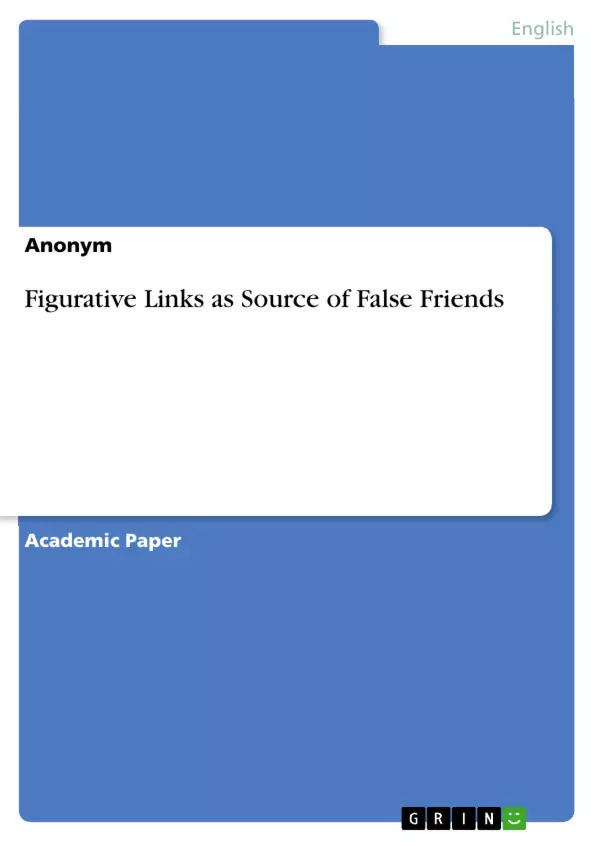The goal of this paper is to investigate diachronically the processes of semantic change from which originate false friends by the examination of five typical cases of false friends between English and German. First, a classification of different types of false friends (chance and semantic) will be made. This part includes the delineation of the major meaning shifting processes (metaphor, metonymy, specialization and generalization) that have resulted in semantic false friends. Second, the diachronic development of five cases of semantic false friends will be examined in order to find out to which extent these figurative links have contributed to the existenceof false friends.
European learners of English as a foreign language are familiar with situations in which they create incorrect interferences between words belonging to their mother tongue and words from the target language, assuming that their meanings are equivalent. Due to the existence of cross-linguistic word pairs that are similar, even identical in orthography or in spelling the foreign language learner traps into treacherous language errors which result in misunderstandings, mistranslations and difficulties in communication.
Inhaltsverzeichnis (Table of Contents)
- Introduction
- Literature
- Polysemy and semantic change
- Metaphor
- Metonymy
- Specialization and Generalization
- Method and Discussion
- brief
- map
- brave
- caution
- sentence
- Conclusion
- References
Zielsetzung und Themenschwerpunkte (Objectives and Key Themes)
This paper examines the diachronic processes of semantic change that have resulted in false friends between English and German. It aims to understand the role of figurative links in the development of these linguistic phenomena.
- Classification of false friends (chance and semantic)
- Examination of major meaning shifting processes (metaphor, metonymy, specialization, generalization)
- Diachronic analysis of five cases of semantic false friends
- Contribution of figurative links to the existence of false friends
Zusammenfassung der Kapitel (Chapter Summaries)
- Introduction: This chapter introduces the concept of false friends, highlighting the potential for misunderstanding due to linguistic similarities across languages. It provides examples of false friends between German and English, demonstrating the disparity in meaning despite identical orthography. The chapter also outlines the goals of the paper, which is to investigate the historical development of false friends through an analysis of specific cases.
- Literature: This chapter reviews the existing literature on false friends. It presents different classifications of false friends, distinguishing between chance false friends (based on coincidental similarities) and semantic false friends (which share etymological origins but have evolved different meanings). The chapter emphasizes the significance of cognitive linguistics in explaining the relationship between these false friends and the underlying semantic processes.
- Method and Discussion: This chapter outlines the methodology used in the paper and provides a discussion of five specific cases of semantic false friends. Each case will be examined for its historical development, revealing the underlying processes of semantic change that have contributed to the emergence of false friends.
Schlüsselwörter (Keywords)
This paper focuses on the concept of false friends, exploring the historical development of these linguistic phenomena through the lens of semantic change. The key themes include polysemy, metaphor, metonymy, specialization, and generalization, providing a detailed analysis of how figurative links contribute to the existence of false friends.
- Quote paper
- Anonym (Author), 2013, Figurative Links as Source of False Friends, Munich, GRIN Verlag, https://www.grin.com/document/498484



